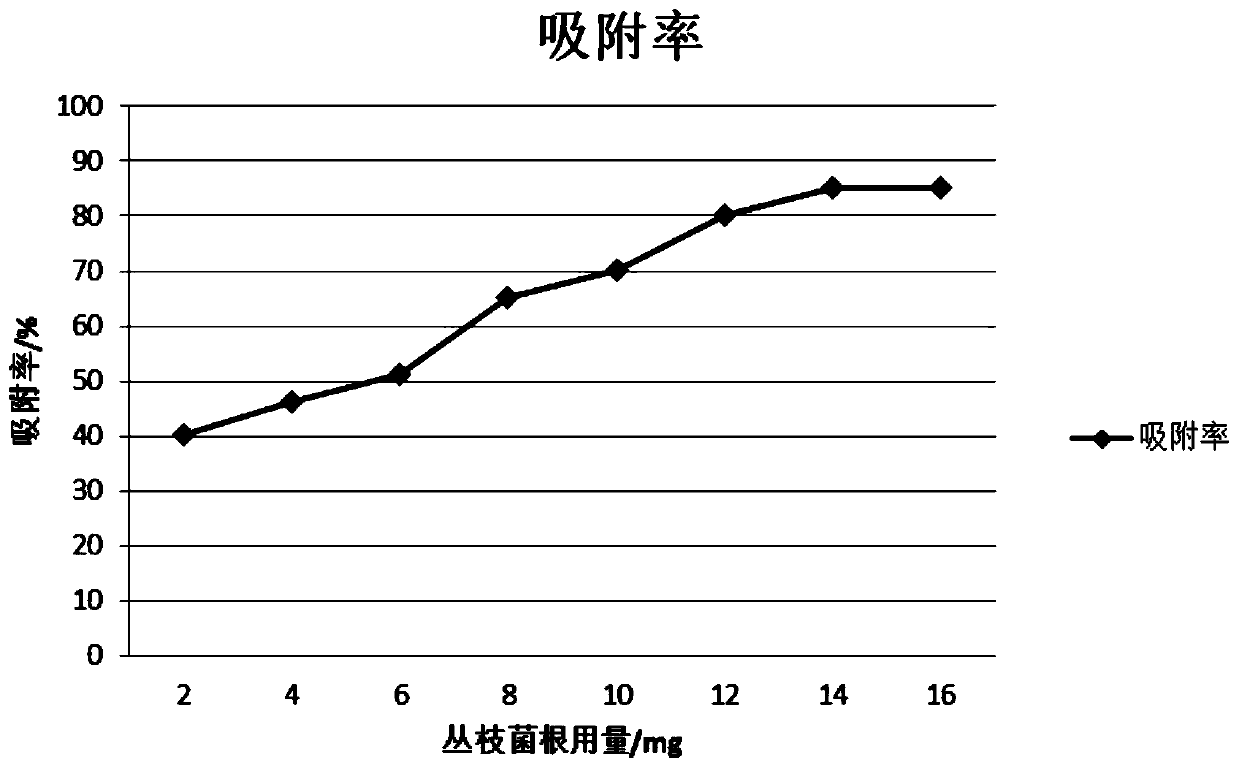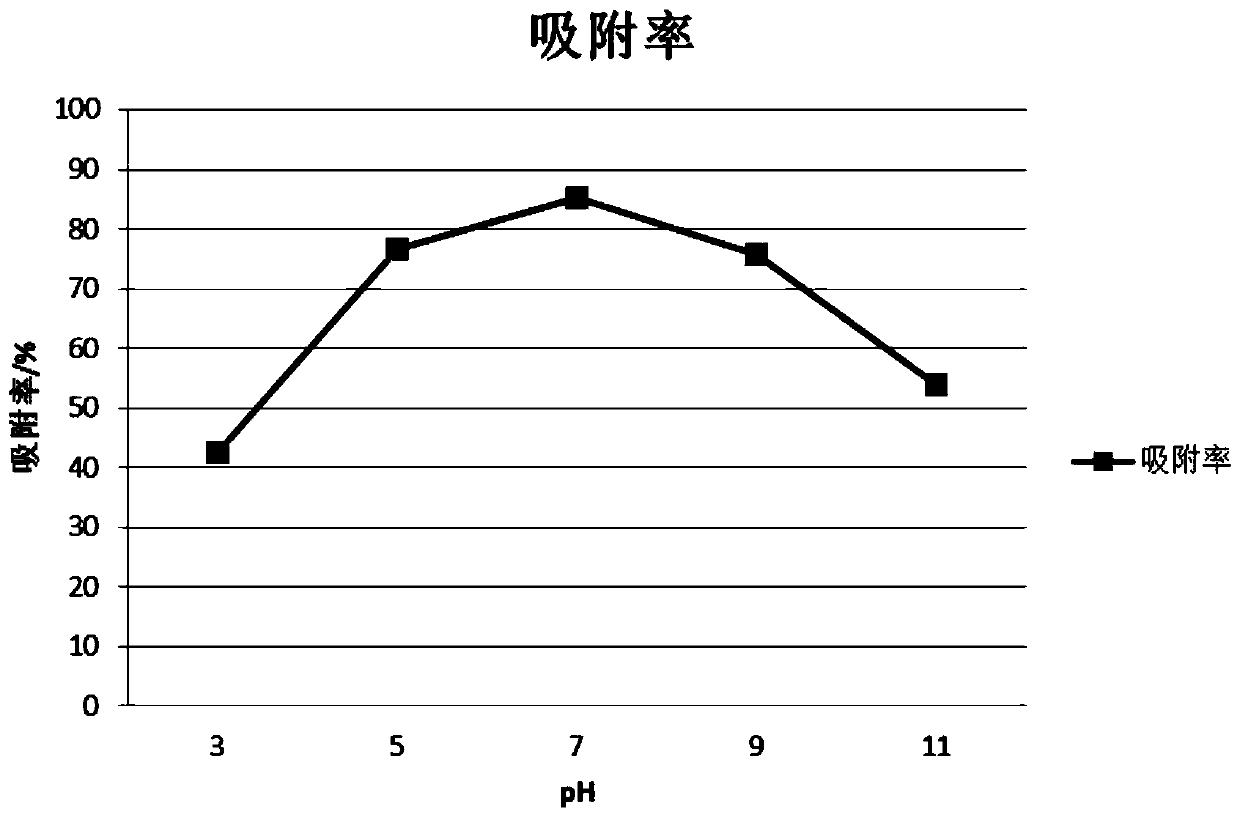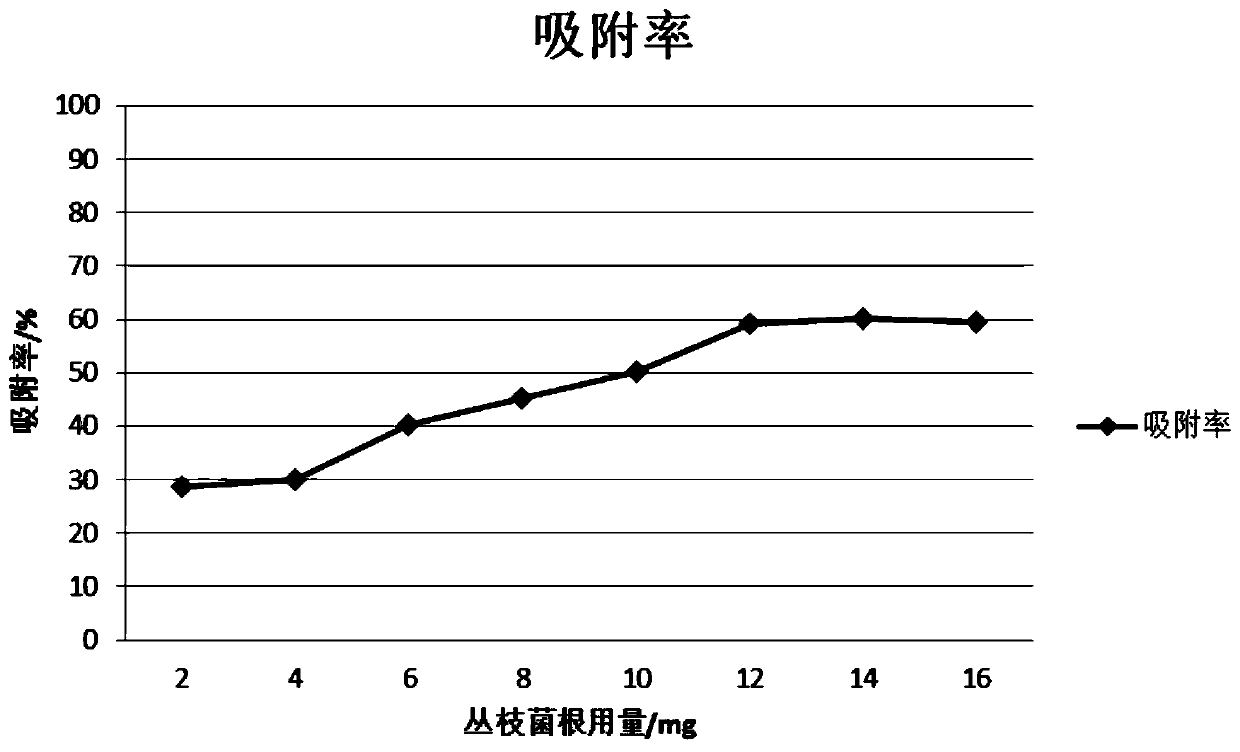Method for adsorbing heavy metals in soil through plant-microorganism combination
A heavy metal and microbial technology, applied in the field of soil remediation, can solve the problems of low cost, groundwater infestation, and obvious treatment effect, and achieve the effects of simple preparation process, beautifying the environment, and low price
- Summary
- Abstract
- Description
- Claims
- Application Information
AI Technical Summary
Problems solved by technology
Method used
Image
Examples
Embodiment 1
[0023] Embodiment 1 The method of plant-microbe joint adsorption of heavy metals in soil
[0024] 1. Collection of VA fungal spores:
[0025] 1) Select the tall and healthy Artemisia japonica tree for excavation, and collect 50g of soil at a depth of 30cm from the ground.
[0026] 2) Sieve the collected soil with a 100-mesh sieve.
[0027] 3) Collect the exposed VA fungal spores.
[0028] 2. Preparation of culture medium
[0029] 1) Preparation of beef extract-peptone medium: 3 g of beef extract; 10 g of peptone; 5 g of sodium chloride; 15 g of agar;
[0030] 2) Add 10 g of river mud and soil to 50 g of beef extract peptone medium.
[0031] 3) Put the medium obtained in step 2) into a high-temperature steam sterilizer at 121° C. for 15-20 minutes to sterilize. Then use 15 g of 20% hydrogen peroxide solution for fumigation for 15 minutes.
[0032] 3. Cultivation of VA fungi:
[0033] The obtained arbuscular fungus spores were inoculated on the culture medium by plate coa...
PUM
 Login to View More
Login to View More Abstract
Description
Claims
Application Information
 Login to View More
Login to View More - R&D
- Intellectual Property
- Life Sciences
- Materials
- Tech Scout
- Unparalleled Data Quality
- Higher Quality Content
- 60% Fewer Hallucinations
Browse by: Latest US Patents, China's latest patents, Technical Efficacy Thesaurus, Application Domain, Technology Topic, Popular Technical Reports.
© 2025 PatSnap. All rights reserved.Legal|Privacy policy|Modern Slavery Act Transparency Statement|Sitemap|About US| Contact US: help@patsnap.com



